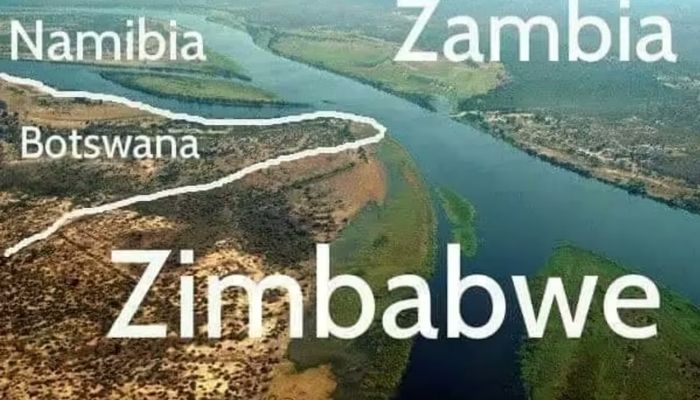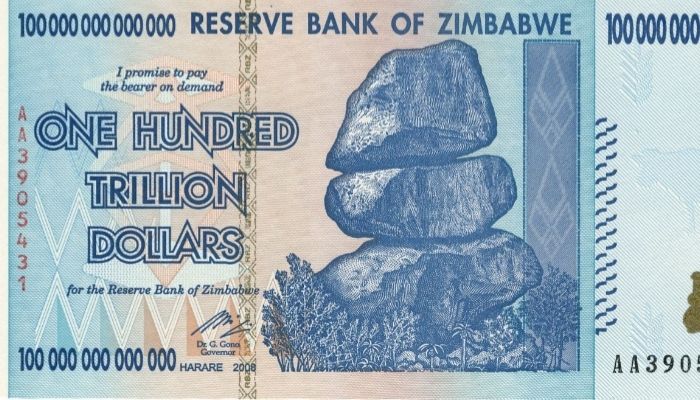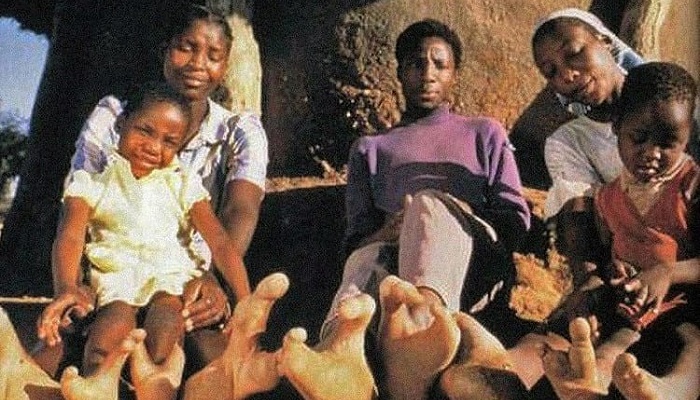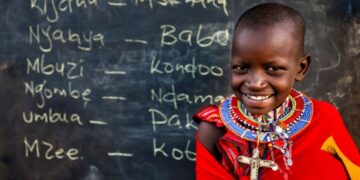Zimbabwe is probably one of those countries that is somewhere on your list of most unique African countries. Arguably, it has a rich history that dates back thousands of years and today we still see some of the relics standing. Since its independence on April 18, 1980, it officially became the Republic of Zimbabwe with its capital in Harare.
There are many interesting facts about Zimbabwe that make it stand out like its beautiful scenery, natural resources, and culture, and as the Guinness record breaker for having the most official languages in 2013.
Did You Know These Intriguing Facts About Zimbabwe?
1. It Forms the Four Corners of Africa-Kazungula Quadripoint

This rare occurrence is the description of the point where the four countries of Zimbabwe, Zambia, Botswana, and Namibia meet. This rare occurrence which is the only one in the world is also known as an international quadripoint.
Like its neighboring countries, they all meet on the Zambezi River.
2. It Broke the Guinness World Record for Having the Most Official languages in 2013
While most countries in Africa adopted the languages of their former colonial masters as official languages to be used in communication and speech, Zimbabwe chose English and 15 of its indigenous languages.
Aside from English, other official languages include Chewa, Shona, Ndebele, Chibarwa, Kalanga, Koi-san, Ndau, Sotho, Tswana, Venda, Nambya, Shangani, Tonga, Xhosa, and sign language. Out of these languages, more than 70% speak Shona. Also, due to the large coverage that these languages enjoyed, Zimbabwe broke the Guinness Record for most official languages in 2013 ahead of countries like South Africa, India, and Bolivia.
However, this record was broken by Bolivia with its 37 official languages in 2022. Regardless of this, Zimbabweans still enjoy using many official languages.
Moreso, there are many other Guinness world records held by Zimbabweans including Marimba dancing and the issuing of highest denomination notes.
3. Zimbabwe is Home to 5 UNESCO World Heritage Sites
This landlocked southern African country is truly a ‘land of beauty’ not only for its natural resources but also for its rich cultural heritage. It has five UNESCO sites and these are Great Zimbabwe National Monuments, Khami Ruins, Matobo Hills, Victoria Falls, and Mana Pools.
Aside from being a heritage site, they are national monuments that tell the stories of people who lived in the area. Sites like Great Zimbabwe which the country takes its name from one of Africa’s architectural wonders done by the Shona people. It was made a cultural site in 1986 due to the role it played in the area and the world at large. The other two cultural sites are the Matobo Hills and the Khami Ruins. Like Great Zimbabwe, the Khami Ruins is a stone complex that was once the center of the Butua state.
The imposing Matobo Hills is not only a heritage site but it is also a place of religious significance as many see it as an ancestral shrine. Locals believe that they can get requests such as rain, marriage, and children after visiting. Another attraction to the site is to visit the resting place of Cecil Rhodes, a former colonialist, and De Beers founder. Aside from this, the rock art found on the hills dates back thousands of years.
The other two sites, Victoria Falls and Mana Pools have been described as gifts of nature due to their magnificence and value.
4. The Zimbabwean 100 Trillion Dollars Note is One of the Highest Denominations Ever Printed

At independence in 1980, Zimbabwe adopted the Zimbabwean dollar to replace the Rhodesian dollar. However, the years following that saw the redenomination or changing of the currencies’ values in 2005, 2008, and 2009 due to inflation and poor monetary policy.
Notably, the 2008 redenomination introduced 100 trillion Zimbabwean dollars, one of the highest denomination notes in the world. While such a high denomination may allow one to buy a lot of commodities in other stable economies, the 100 trillion Zimbabwean dollars led to more problems such that one could only buy two loaves of bread and a few pieces of egg. Also, the effect led to the abandonment of the Zimbabwean dollar in 2009.
As you would easily find, the country still has an unstable currency and this has led to the adoption of other international currencies such as the South African rand and the US dollar. Interestingly, the worthless denomination is now valuable to currency collectors.
5. A Must-Visit Destination for a Safari Trip
As home to 11 national parks, Zimbabwe is one of the tourist destinations for an unforgettable safari trip. Of these numbers, Hwange is the largest and most famous. Other safari destinations in the country include the Matobo, Mana Pools, and Matusadona National Parks.
Notably, the big 5 animals, lion, elephant, buffalo, rhino, and buffalo are found in these parks. In fact, outside Botswana, the next biggest population of elephants is found in Zimbabwe. While the government protects 12% of the surface land most of which is covered by the national parks, there are other fascinating spots like Victoria Falls that are a must-visit.
6. The Two-toed Vadoma People are Found in Zimbabwe

Also known as the Ostrich people, the Vadoma people only have two toes. The absence of three middle toes makes them have unique two toes. Such an enormous toe which makes them stand out is caused by ectrodactyly or the lobster syndrome.
Much scientific explanation points to a mutation in chromosome number 7. and is known to be found in other parts of the world. Nonetheless, that of the Vadoma people has not been fully explained by scientists and it continues to be passed from generation to generation. This has led to limitations in how they relate with other groups. It is said that they are not allowed to marry outside their tribe to prevent the spread of the condition.
Despite the inability of science to explain the high occurrence among the Ostrich people, the Vadoma explain it according to local myth. It is said that they are descendants of ancestors that lived in Boabab trees and their relationship with earthly women affected their DNA.
7. Zimbabwe Has One of The Most Literate Populations in Africa
When it comes to education, Zimbabwe is one country that is serious about having a literate human capital. According to statistics, the literacy rate in the country is above 80% which means many people over the age of 15 can read and write. While there are other countries like Seychelles with literacy rates of over 90%, the Southern African nation is among the top ten on the continent.
8. It is Said to Be The Biblical Location of Ophir
The foundations of this modern African country may be traced to British colonializations, yet, there are speculations of its being the location of Ophir, an ancient land where King Solomon got precious items like gold and ivory.
While this may be mere speculation, the country has a History of trading with other parts of the world such as Portugal, Asia, and Africa.
9. Lake Kariba is Home to the River god, Nyami Nyami
Aside from being the largest man-made lake in the world, Lake Kariba is a source of power generation. Aside from this, the lake which is owned by Zambia and Zimbabwe holds a spiritual significance to the Tonga people that lived on its shores for many years.
According to local myths, the river god, Nyami Nyami now lives in the water waiting for his wife, who is said to have been separated from him during the construction of the dam. Based on local myths, the separation made the river god so angry that he decided to avenge her by the flooding of the dam in 1958.
10. Zimbabwe is the Leading Tobacco Producer in the Africa
The country is among the top ten tobacco producers in the world and grows about 25% of tobacco leaves on the continent. However, only about 20% of Zimbabweans smoke tobacco, what then happens to the large produce gotten? It turns out most of it is shipped to other parts of the world.




















